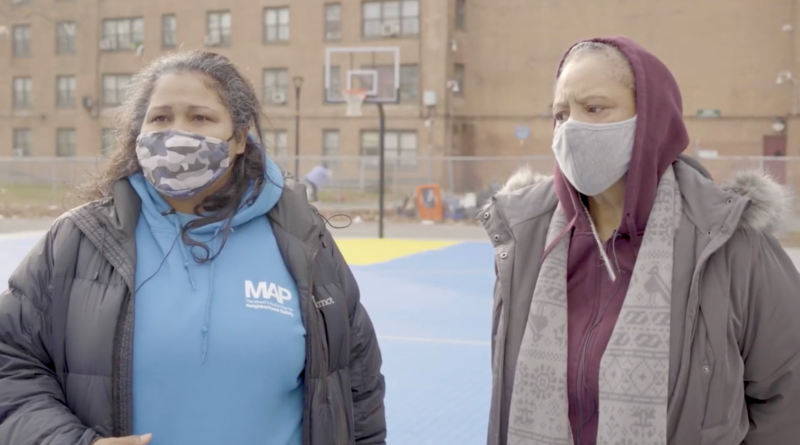Virtual Summit Spotlights Community Safety Projects at NYCHA
“Love where you live.” That was one of the messages from NYCHA residents who produced videos detailing how they are helping to shape safety interventions in their communities.
Led by the Mayor’s Office of Criminal Justice, a virtual summit held in late January brought together NYCHA resident leaders, local government officials, and policy makers to discuss how these safety interventions can influence policy.
The community safety efforts are at the heart of the Mayor’s Action Plan for Neighborhood Safety (MAP), a neighborhood-based initiative of the Mayor’s Office of Criminal Justice that aims to increase safety through coordinated crime reduction efforts at 15 NYCHA developments. Through its NeighborhoodStat process, MAP brings together residents of the 15 NYCHA properties, community organizations, and City agencies to identify public safety concerns and priorities, create action plans, and implement collaborative solutions to help support a more vibrant community.
Since 2014, MAP has partnered with these groups to “address the systemic inequities that have led to the disproportionate impacts of violence in our communities,” MAP Executive Director Renita Francois noted at the January 23 summit, which had nearly 400 registered attendees.
Ms. Francois said that resident stakeholder teams at each MAP site, along with project partners, have prioritized key safety issues and led “transformational change” in public spaces while providing programming access for their neighbors and connecting thousands of NYCHA residents to central resources.
Priorities have varied at the 15 NYCHA developments, with projects ranging from welcome signs and community gardens at Queensbridge Houses to a Resource Hub at Stapleton Houses and lighting installations at Brownsville Houses. The projects were highlighted as part of resident-produced videos that were showcased throughout the virtual summit.
“Each of these safety interventions was created by residents for residents as innovative solutions to addressing community safety,” said Danielle Brutus of the Center for Court Innovation, a MAP project partner.
Other featured summit activities included a series of panels and discussions on topics such as the legacy of the stop-and-frisk policy and “Physical Space as an Innovative Design and Policy Opportunity.” The NeighborhoodStat summit was also intended to set the stage for a series of upcoming policy-shaping working groups, leading up to the development of a shared action agenda to implement various community safety solutions.
“During the summit, we wanted to make sure that policy makers understand the resident priorities and achievements, and that residents leave with a thorough understanding of what policy is and how we can work together to change or enhance it,” said Wagner Houses resident Cheryl Starks, a summit speaker. “We hope you will join us in achieving our goals of thriving, vibrant communities with resident voices centered in these policies that impact their safety and well-being.”
Photo caption: Residents at Castle Hill Houses are among the stakeholder teams who have helped shape safety interventions at NYCHA that were featured in videos at the NeighborhoodStat summit.







